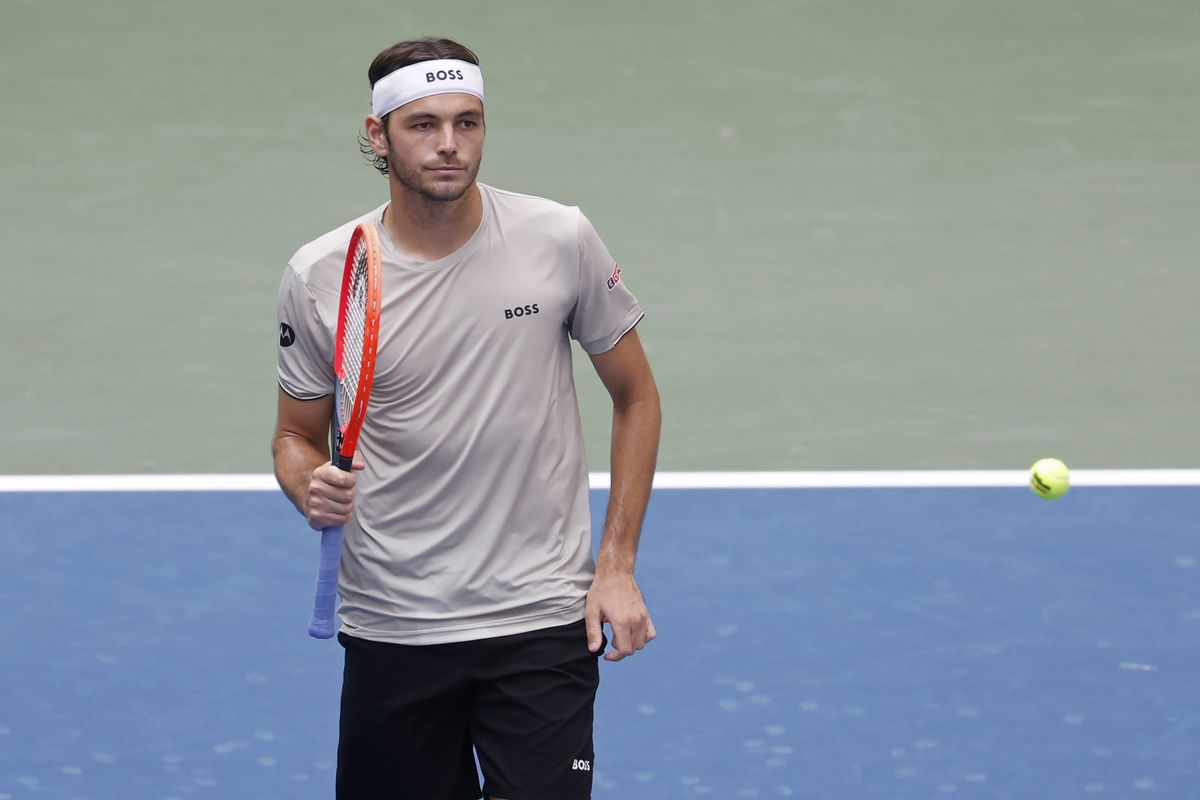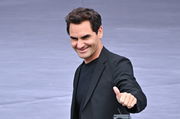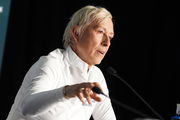
USA Today via Reuters
Aug 26, 2024; Flushing, NY, USA; Taylor Fritz (USA) celebrates after match point against Camilo Ugo Carabelli (ARG)(not pictured) in a men’s singles match on day one of the 2024 U.S. Open tennis tournament at USTA Billie Jean King National Tennis Center.. Mandatory Credit: Geoff Burke-USA TODAY Sports

USA Today via Reuters
Aug 26, 2024; Flushing, NY, USA; Taylor Fritz (USA) celebrates after match point against Camilo Ugo Carabelli (ARG)(not pictured) in a men’s singles match on day one of the 2024 U.S. Open tennis tournament at USTA Billie Jean King National Tennis Center.. Mandatory Credit: Geoff Burke-USA TODAY Sports
Have you ever wondered why tennis players such as Jannik Sinner, Carlos Alcaraz, and Coco Gauff almost never post their own match highlights on social media? They are not uploading their videos, but they are often reposting the videos of the sports networks or the pages of the tournaments. It is because it is an easy yet aggravating reason. Players are not free to share videos of matches that they played in reality because the organizers of the tournaments hold a tight grip on broadcasting rights. When they post without authorization, the content they post can be removed due to copyright violations. So even the world’s best athletes are left with still photos or short, carefully edited clips long after the moment has passed. That’s exactly the kind of system America’s Taylor Fritz finds “kind of absurd.”
Watch What’s Trending Now!
In a recent interview with GQ, Fritz, currently ranked world No. 4 by the ATP, revealed something that goes way beyond tennis. It exposed the ways in which contemporary athletes are supposed to behave as content producers while maintaining their peak performance. The majority of players can relate to Fritz’s admission that developing a personal brand is more difficult than it seems. “The social media part is something that causes me a good amount of stress,” he said. He knows how important it is for a player’s image and sponsorships, but he’s honest about how draining it can be. His Instagram has about 874k followers, although, as he mentions, it might have been considerably more, had it not been one of the key obstacles, which is the nature of the tennis tour itself.
“A lot of the tournaments are saying, ‘You either have to have won a Slam or have 1 or 2 million followers to even be allowed a videographer on tour,’ which I think is absurd,” Fritz explained. Perhaps absurd would be an understatement. To be permitted to film your journey, you must have followers; however, you cannot acquire followers unless you are granted permission to film. A Catch-22.
ADVERTISEMENT
For the majority of players, social media growth is hampered due to those rules. Full access is only granted to a select few well-known figures, such as Carlos Alcaraz, who currently has 7.9 million followers. In addition to winning the Grand Slam at the age of 21, Alcaraz also secured his own Netflix documentary, “Carlos Alcaraz: My Way,” which debuted on April 23, 2025.

Imago
Image Credits: Laver Cup/Instagram
“How are you ever going to have a million followers if you don’t have someone capturing decent content to build your brand?” is the simple and logical outburst of frustrations expressed by Taylor Fritz. They participate in one of the world’s most international sports, but they are frequently prohibited from showing fans what that world is like. Control, not effort or inventiveness, is the problem. And the same burden has been placed on those closest to him.
ADVERTISEMENT
Even Taylor Fritz’s partner, influencer Morgan Riddle, who manages much of his online presence, has faced the same headache. “I’ve gotten multiple copyright strikes against my account when I post videos of him,” she said. “In the last three years, the tournaments and the tour have gotten really strict with where you can film and where you can’t. I’m not allowed to have a camera in the box anymore, whereas a couple of years ago, none of those rules were in place.”
Therefore, tennis appears to be holding its stars back, whereas other sports are flourishing behind-the-scenes storytelling. The irony? The ATP wants its athletes to be globally marketable, but the sport’s very structure prevents them from doing so. Not only do current players recognize the issue, but legends have also voiced their opinions.
ADVERTISEMENT
Tennis is “missing the boat” on social media
Andy Roddick just a few months back, gave a reality check for tennis. On the Served podcast, Roddick said what many players quietly feel: it’s ridiculous that athletes can’t post even short clips of themselves playing in their own matches. He asked, “Why shouldn’t you be able to post your own clips? What’s the downside?” His point was simple.
Players like Daria Kasatkina, who runs her YouTube vlog What The Vlog, should be allowed to show the world their own moments on court. As she said, “I’m the one out there working, I’m the one sweating. How come I can’t put one clip of me hitting a tennis ball in my own vlog?” Roddick’s message, however, went further and called for reform.
ADVERTISEMENT
According to Roddick, allowing athletes to share their own highlights would benefit broadcasters and tournaments rather than harm them. New tennis fans are immediately attracted to the sport when celebrities like Coco Gauff or Carlos Alcaraz share an incredible rally or match point with their millions of followers. More interest, more excitement, more eyes.
Top Stories
Roger Federer Sparks Comeback Frenzy After Huge Australian Open Announcement

Martina Navratilova Drops 3-Word Message in Aryna Sabalenka’s Support Over Her Recent Comments

Aryna Sabalenka Breaks Silence on Nationality Switch After Belarus Representation Ban

26YO ATP Pro Handed 20 Years of Suspension After Breaching 27 Anti-corruption Programs

ATP Answers Carlos Alcaraz and Taylor Fritz’s Outcry With Major Scheduling Overhaul

He concurred with journalist Jon Wertheim that by keeping everything behind closed doors, tennis is “missing the boat.” These days, short, viral videos that are shared in a matter of seconds are what attract new fans rather than lengthy TV replays. Tennis hasn’t taken off, though, for some reason.
Players like Taylor Fritz, Roddick, and Kasatkina have made it very evident that tennis cannot advance by remaining silent on the internet. The sport must restore the voices of its stars if it hopes to attract new followers.
ADVERTISEMENT
ADVERTISEMENT
ADVERTISEMENT
ADVERTISEMENT

